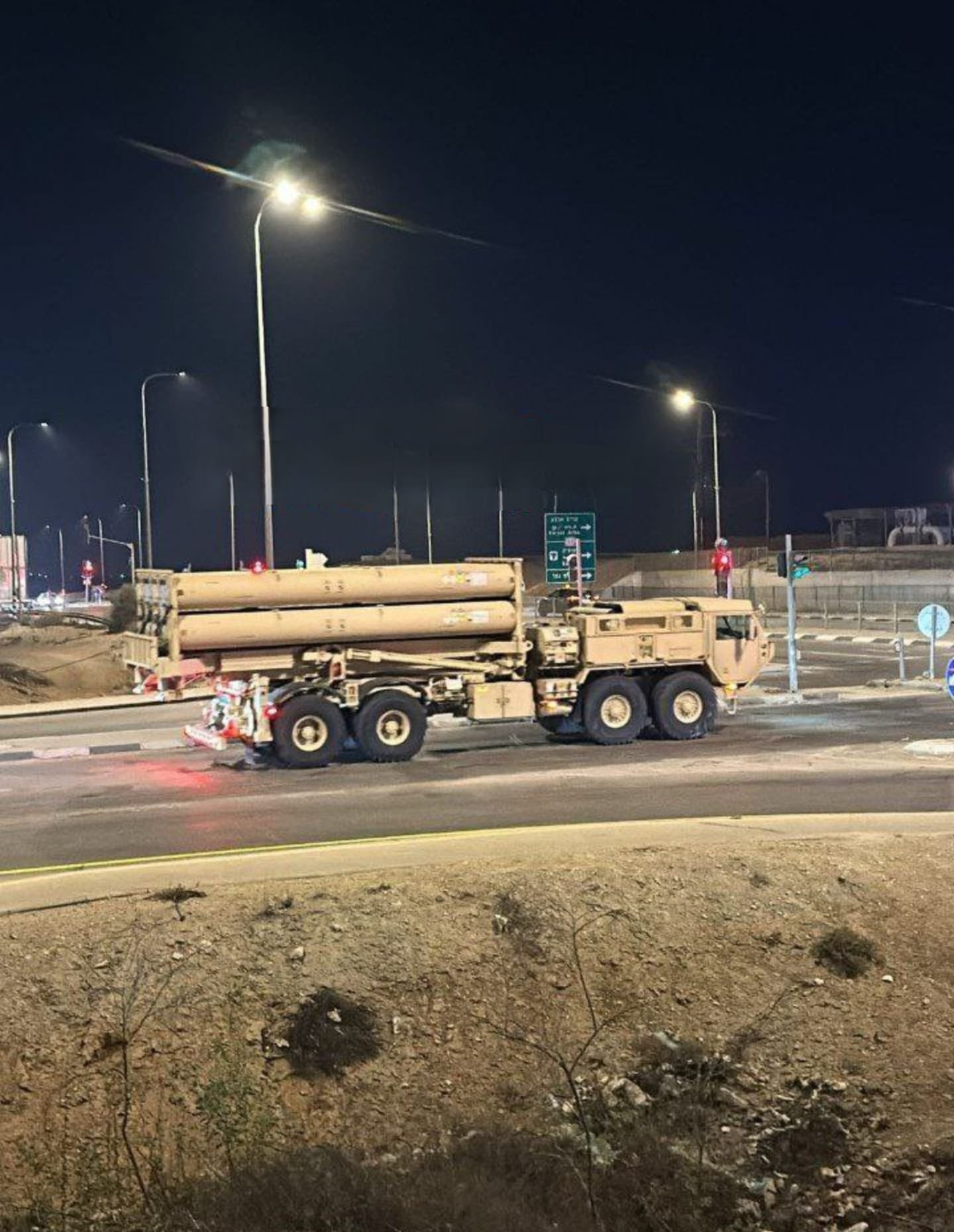As reports are coming out that Israel is now ready to strike back at Iran for the most recent missile attack launched directly from Iranian soil, and the Biden Administration becoming increasingly frustrated with their inability to lower tensions in the region (if you believe that is not a ruse, which I suspect it is) — President Biden has just done what he said he wouldn’t; there are now American boots on the ground in Israel.
In a move categorized by (Ret) Vice Admiral James Syring (the former Director of the U.S. Missile Defense Agency) as “de-escalatory” in nature, the first pictures are coming out of U.S. THAAD systems on the ground in Israel, along with approximately 100 U.S. soldiers to operate them.
This deployment happened as Israeli sources apparently confirmed to CNN that their targeting and planning is complete, and they are ready to move forward with a military response directly on targets within Iran. According to CNN, Israel has assured President Biden that the targets will be limited to strictly military targets.
Israel’s plan to respond to Iran’s October 1 attack is ready, a source familiar with the matter told CNN, without providing further information.
Israeli officials, including Prime Minister Benjamin Netanyahu, have assured the US that a counterstrike on Iran would be limited to military targets rather than oil or nuclear facilities, according to a source.
Iran launched dozens of missiles toward Israel in retaliation for the killing of Hezbollah leader Hassan Nasrallah, Hamas political leader Ismail Haniyeh and others.
Netanyahu had vowed that Iran would “pay” for the attack.
ADVERTISEMENT
This picture is reportedly the first image showing the THAAD system on the ground in Israel.

According to a report from Business Insider, the THAAD System is the world’s most advanced missile defense system, able to use purely kinetic energy to intercept incoming missiles both inside or outside the atmosphere.
Impressively, the THAAD missile does not carry a warhead, instead using pure kinetic energy to deliver “hit-to-kill” lethality to ballistic missiles inside or outside of the atmosphere. Each launcher carries up to eight missiles and can send multiple kill vehicles out, depending on the severity of the threat.
Lockheed’s THAAD launcher is one element of this highly integral anti-missile system. This graphic from Raytheon shows the rest of the equipment needed for each enemy-target interception.

While my personal opinion is that the United States should stand with our allies, including Israel (as opposed to leaving them high and dry like we did to our Afghan partner forces in the botched Afghanistan withdrawal), I am wary of putting U.S. boots on the ground in Israel — even in a defensive posture.
Iran has stated emphatically that the next time a single plane or missile is spotted in the air targeting it’s soil, it will immediately launch a response attack. We will have to wait to see if that plays out, but my concern is that instead of playing a defensive role in the air, sea-based systems, and with intel help using our advanced satellite capabilities as we have done up to this point, we are not walking into a situation where — God forbid — U.S. soldiers could be harmed on the ground in Israel by a direct Iranian attack.
That is a tough situation to walk back from without escalating to full-scale war almost immediately thereafter.
According to an MSNBC video report about the deployment, the move would allow the U.S. to take out a missile strike in the very last moments before impact, if necessary.
US troops arrive in #Israel 🇮🇱 to operate the missile defense system.
Source Alertas new 24 pic.twitter.com/12CN2FNOte— Jose Rosell (@arturillo955) October 15, 2024
Here’s a THAAD missile system in action:
Biden promised no troops on the ground in Israel, yet here we are. The US sending one of its THAAD systems is a clear sign something big is about to go down.
Israel’s gearing up for another major strike, and THAAD is there to handle the mess Iran will send in response. Iron… pic.twitter.com/9yLxIUMBTN
— Elevator Charles 🛗 (@coopsimms) October 14, 2024
The U.S. has increased its presence in the Middle East since the October 7th attack last year, according to a CNN report covering the THAAD deployment.
The US has been consulting with Israel on how it plans to respond to Iran’s October 1 attack on the country, and US officials have made clear they do not want Israel to target Iranian nuclear sites or oil fields. US President Joe Biden spoke to Israeli Prime Minister Benjamin Netanyahu on Wednesday, their first conversation in almost two months, telling him Israel’s retaliation should be “proportional.”
The US military has significantly increased its presence in the Middle East since October 7, 2023, when Hamas attacked Israel. The US has bolstered its air defenses across the region, deployed additional warships and aircraft carriers to the eastern Mediterranean, Red Sea and Arabian Sea, and recently sent additional troops to Cyprus to help with possible evacuation planning, CNN previously reported.
With Israel apparently set to kick of it’s response to Iran at any moment, it is possible that we could see something happen in the coming hours. Israel tends to launch strikes such as these in the early morning hours, mimicking U.S. methods of striking military targets with the fewest number of personnel present, and also using the darkness of night to help conceal the attack.
As of the time of this report, it is currently 1:30am in the region. With Iran promising an immediate response, it would not surprise me to see Israel strike in the hours just prior to dawn with the hopes of leaving Iran the undesired option of responding during daylight hours, or having to hold off on their response.
This is a developing situation and we will bring you updates when they become available.



Join the conversation!
Please share your thoughts about this article below. We value your opinions, and would love to see you add to the discussion!